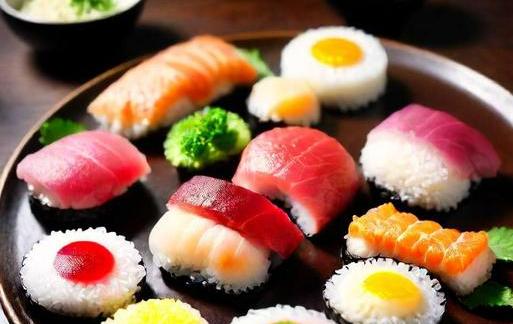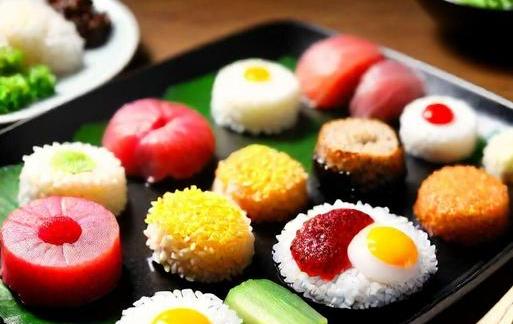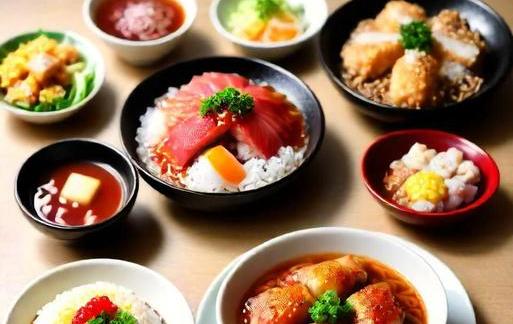- You are here:
- Home »
- Food
- » [REVEALED] Japanese Foods That Start With U
[REVEALED] Japanese Foods That Start With U
Note: This page contains affiliate links.
As an Amazon Associate, I earn from qualifying purchases when you click on the link, but you are not charged extra.
Japanese cuisine is a delightful tapestry of flavors, textures, and culinary artistry that has captivated the taste buds of people around the world. From sushi to ramen, Japanese food has become synonymous with precision, balance, and exquisite presentation. In this gastronomic journey, we will delve into the lesser-explored realm of Japanese foods that start with the letter “U”. Uncover the unique and delectable offerings that contribute to the rich mosaic of Japanese culinary heritage.
Contents
List Of Japanese Foods That Start With U

1. Udon (うどん)
Description:
Udon, a staple in Japanese cuisine, is a thick wheat noodle often served in a mild, soy-based broth. These hearty noodles are known for their chewy texture and versatility. Udon can be paired with a variety of ingredients such as tempura, green onions, and seaweed, making it a customizable and comforting dish.
Preparation:
The preparation of udon involves kneading wheat flour with salt and water, resulting in a dough that is rolled out and cut into thick noodles. The noodles are then boiled and served hot in a flavorful broth.
Serving Suggestions:
Udon can be enjoyed in various forms, including Kitsune Udon (with sweet fried tofu), Tempura Udon (with tempura toppings), and Niku Udon (with sliced beef).
2. Uni (うに)
Description:
Uni, or sea urchin, is a delicacy highly prized in Japanese cuisine for its rich, creamy texture and briny flavor. Served fresh and often raw, uni is a unique culinary experience that showcases the ocean’s bounty.
Preparation:
Uni is carefully extracted from the spiky shell of the sea urchin, cleaned, and served as sashimi or nigiri. Its vibrant orange color and distinct taste make it a sought-after ingredient in high-end sushi establishments.
Serving Suggestions:
Uni can be enjoyed on its own, showcasing its natural flavor, or paired with rice in sushi. It is also used to enhance the flavor of various dishes, such as pasta or risotto.
3. Umeboshi (梅干し)
Description:
Umeboshi, pickled Japanese plums, are a traditional condiment known for their intense sour and salty taste. These pickled plums are often enjoyed as a side dish or used as a seasoning to add a punch of flavor to various dishes.
Preparation:
Umeboshi are made by pickling ume plums in salt, red shiso leaves, and sometimes additional flavorings like bonito flakes. The pickling process results in a tart and tangy flavor profile that is both refreshing and invigorating.
Serving Suggestions:
Umeboshi are commonly served as a side dish with rice, used as a filling in onigiri (rice balls), or incorporated into dressings and sauces. They can also be enjoyed with tea as a palate cleanser.
4. Usuyaki Tamago (薄焼き卵)
Description:
Usuyaki Tamago, or thin omelet, is a versatile and delicate component in Japanese cuisine. The thin layers of cooked egg are often used as a wrapping for sushi or as a garnish for various dishes.
Preparation:
To make Usuyaki Tamago, a thin layer of beaten eggs is cooked in a special rectangular pan, resulting in a delicate and slightly sweet omelet. The thinness of the layers allows for easy rolling and folding.
Serving Suggestions:
Usuyaki Tamago is commonly used as a wrapping for Tamago Nigiri (sushi with layered egg) or as a garnish for donburi (rice bowls). Its subtle sweetness complements the savory elements in these dishes.
5. Uguisu Mochi (うぐいす餅)
Description:
Uguisu Mochi, a traditional Japanese sweet, is a rice cake filled with sweet red bean paste. The name "Uguisu" refers to the Japanese bush warbler, and these mochi are often shaped like the bird.
Preparation:
The mochi exterior is made from glutinous rice flour, which is pounded and molded into a soft, chewy texture. The sweet red bean paste filling adds a luscious and sweet contrast to the rice cake.
Serving Suggestions:
Uguisu Mochi is enjoyed as a dessert or snack, often accompanied by green tea. The bird-shaped mochi is not only a treat for the taste buds but also a visual delight, showcasing the artistry in Japanese confectionery.
In this culinary exploration of Japanese foods that start with "U", we've uncovered a diverse array of flavors and textures that contribute to the country's rich gastronomic tapestry. From the comforting warmth of Udon to the luxurious delicacy of Uni, each dish reflects the precision, creativity, and reverence for nature that define Japanese cuisine. As you embark on your own journey through Japanese cuisine, don't hesitate to seek out these unique and lesser-known delights. Whether you're savoring the tartness of Umeboshi, appreciating the versatility of Usuyaki Tamago, or indulging in the sweetness of Uguisu Mochi, each bite tells a story of tradition, craftsmanship, and the art of savoring every moment. So, immerse yourself in the world of Japanese 'U' foods and discover the hidden gems that await your palate.
Significance

Japanese cuisine is renowned for its rich variety, delicate flavors, and exquisite presentation. The culinary landscape of Japan reflects a deep connection to tradition and a constant pursuit of culinary excellence. In this exploration of Japanese foods, we delve into the lesser-known realm of ingredients that start with the letter “U”. Unearthing these culinary treasures unveils a fascinating world of unique tastes and textures that contribute to the diverse tapestry of Japanese gastronomy.
Understanding the significance of foods that start with ‘U’ in Japanese cuisine requires a nuanced appreciation for the country’s culinary heritage. Japan’s culinary history is deeply rooted in its geography, seasons, and cultural practices. Each ingredient, preparation method, and dish holds a unique place in the broader context of Japanese food culture.
While certain letters may seem less prominent in the Japanese culinary lexicon, investigating the ‘U’ category provides an opportunity to uncover hidden gems and shed light on the lesser-explored aspects of Japan’s gastronomic landscape.
Category-Related

Umeboshi (梅干し)
At the forefront of Japanese foods that start with ‘U’ is the distinctive Umeboshi. These are pickled Japanese plums, often referred to as "pickled plums" or "umeboshi plums." Umeboshi holds a significant place in Japanese cuisine, known for its intense, sour, and salty flavor profile. The plums are pickled with salt, red shiso leaves, and occasionally other flavorings.
Umeboshi serves as a key component in traditional Japanese rice balls known as "onigiri." Beyond its culinary applications, umeboshi is also valued for its potential health benefits, believed to aid digestion and provide a natural source of electrolytes.
Udon (うどん)
Udon, a thick wheat noodle, represents a beloved staple in Japanese cuisine. These noodles are often served in a mildly flavored broth, making them a comforting and satisfying dish. Udon noodles come in various thicknesses, and their preparation can be tailored to suit different regional preferences.
Common udon dishes include Kitsune Udon, featuring sweet deep-fried tofu, and Tempura Udon, which combines udon with crisp tempura. The versatility of udon noodles makes them a canvas for a wide array of flavors and toppings, contributing to their popularity across Japan.
Unagi (うなぎ)
Unagi, or freshwater eel, is a delicacy deeply ingrained in Japanese culinary traditions. Grilled and glazed with a sweet soy-based sauce, unagi is commonly served over rice as a dish known as "Unagi Don." The distinct combination of savory and sweet flavors makes unagi a unique and sought-after ingredient.
Unagi holds cultural significance beyond its culinary appeal. It is often consumed during the summer months, believed to provide stamina and endurance to combat the heat. The process of preparing unagi, particularly the grilling technique known as "kabayaki," requires skill and precision, showcasing the artistry embedded in Japanese culinary practices.
Common Themes
Exploring Japanese foods that start with ‘U’ reveals common themes that permeate the country’s culinary landscape. These themes extend beyond mere ingredients and encompass cultural practices, seasonal considerations, and the meticulous craftsmanship associated with Japanese cuisine.
Seasonality
Japanese cuisine is deeply connected to the changing seasons, and this is evident in the selection and preparation of ingredients. Many foods that start with “U”, such as Umeboshi and Unagi, are associated with specific seasons. Umeboshi, for instance, is often made in early summer when the plums are ripe, while Unagi is a popular summer delicacy.
The emphasis on seasonality not only enhances the freshness and flavor of dishes but also reflects the Japanese appreciation for the ephemeral beauty of nature.
Craftsmanship
The preparation of Japanese foods involves a high degree of craftsmanship. From the meticulous art of sushi-making to the precise grilling of unagi, every step in the culinary process is approached with attention to detail and a commitment to perfection. This dedication to craftsmanship is a defining characteristic that elevates Japanese cuisine to an art form.
Udon noodles, too, require a skilled hand in their preparation. The process of kneading, rolling, and cutting the dough demands a level of expertise that has been passed down through generations, contributing to the consistent quality of udon dishes.
Interesting Facts
Delving into the world of Japanese foods that start with ‘U’ unveils a trove of interesting facts that add depth to the appreciation of these culinary delights.
Umeboshi As A Traditional Preservative
Beyond its vibrant flavor, umeboshi served a practical purpose in ancient Japan as a preservative. The salted and pickled plums were used to extend the shelf life of rice and other perishable foods. Umeboshi’s antimicrobial properties helped prevent spoilage and provided a practical solution for food preservation in a time before modern refrigeration.
Udon’s Evolutionary Journey
Udon noodles have a rich history that traces back over a millennium. Originally introduced to Japan from China, udon noodles underwent a transformative journey to become a quintessential part of Japanese cuisine. The regional variations in thickness, texture, and broth reflect the diverse culinary traditions across Japan, showcasing the adaptability and assimilation of foreign influences in the evolution of Japanese food.
Unagi And Sumo Tradition
Unagi holds a special place in the world of sumo wrestling. It is a longstanding tradition for sumo wrestlers to consume large quantities of unagi during the midsummer months. The belief is that the nutrients in unagi provide the wrestlers with strength and endurance, essential for withstanding the intense heat of the sumo ring. This culinary tradition adds a fascinating layer to the intersection of food and culture in Japan.
Conclusion
In the intricate tapestry of Japanese cuisine, the exploration of foods that start with ‘U’ reveals a world of flavors, traditions, and cultural significance. From the tangy intensity of umeboshi to the comforting allure of udon noodles and the savory elegance of unagi, each ingredient contributes to the diverse and dynamic culinary landscape of Japan.
The significance of these foods extends beyond the plate, intertwining with seasonal rhythms, cultural practices, and the meticulous craftsmanship that defines Japanese culinary traditions. The journey into Japanese foods that start with ‘U’ serves as a reminder of the depth and complexity embedded in this ancient and revered gastronomic heritage.
As we savor the unique tastes and explore the fascinating stories behind each dish, we gain a deeper appreciation for the artistry and ingenuity that have shaped Japanese cuisine into a cultural treasure cherished both within and beyond its borders.


